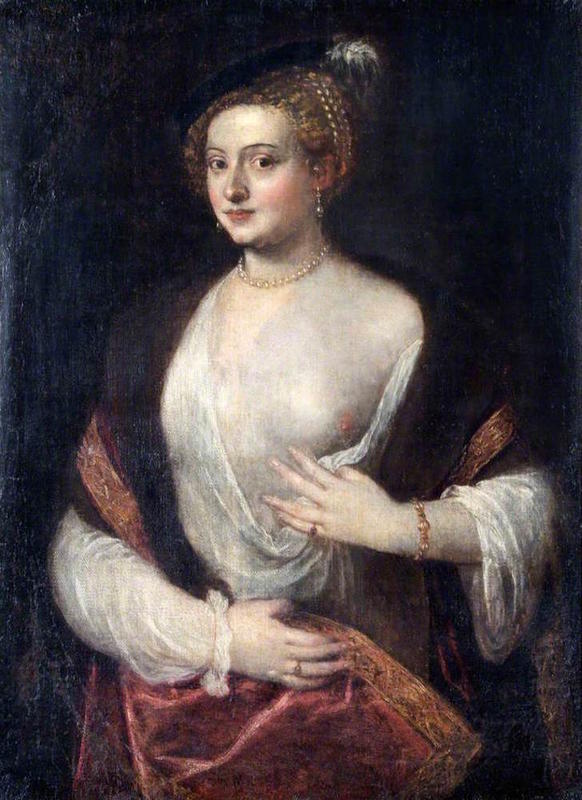More about Portrait of an Unknown Lady

Contributor
Retreating from a solid tail-whoopin' by the Anglo-Irish Earl of Wellington's forces at the battle of Vitoria, Joseph Bonaparte, brother of Napoleon, tried to squirrel Titian's Unknown Lady away with him, stuffing it into his luggage with a bunch of other priceless works.
When the Earl recovered the bounty, he sent it to his brother back in London, who unrolled the paintings, which the army had removed from their original frames and stretchers. Realizing that these weren't bargain-bin items, the Earl offered to return them to Ferdinand VII of Spain, who had kept them as part of his royal collection before the war. In an act of chivalry, the king gave this painting, with the other bundled masterpieces, to the Earl, in appreciation for ending French rule in Spain. A fair trade! Modestly, the king called the bundle a "very small offering." Until recently, some experts took this comment literally, and did not realize that this painting is the work of the master Titian himself.
At some point over the last four centuries, this work was cut down to fit it into an oval-shaped frame, much to the horror of later conservators. A later owner tried to restore the original shape by adding canvas and black paint around the edges, which contributed to the "indistinct" background. Partly due to technical problems like these, and also due to layers and layers of varnish, it took the painstaking work of Alice Tate-Harte in 2012-2014, involving the use of rare lab compounds like human saliva, to affirm that this was actually a work of Titian, rather than one of his students. It's possible that students worked on the accessories of the subject, but Titian, apparently, was a D.I.Y. type of guy, and felt connected to the work enough to write his name in capital Roman letters on the canvas, which Tate-Harte uncovered. Although An Unknown Lady is a more accurate title, "after some debate we’re calling her Titian’s Mistress again," Tate-Harte says. "We have no idea whether she actually was his mistress, but that’s how Wellington would have known the picture so it seems fitting.” A couple of centuries after its composition, art dealers gave the title Titian's Mistress to several paintings, in an attempt to create a saucy story for prospective buyers.
Four years after receiving the king's gift, the Earl purchased Apsley House, which stands opposite an arch bearing his name in Hyde Park, London. Almost two hundred years later, Apsley House showed this painting as the work of Titian for the first time. The restorers also shared some amazing X-Rays of the painting, giving a glimpse of the master's process.
Sources
- "Conserving "Titian's Mistress" from Apsley House." English Heritage, https://www.english-heritage.org.uk/visit/places/apsley-house/history/s….
- "Duke of Wellington's collection of suspect Titians proved to be genuine." Culture 24, May 11, 2015, https://www.culture24.org.uk/art/painting-and-drawing/art526547-duke-of….
- Kennedy, Maev. "The restoration game: painting revealed as genuine Titian." The Guardian, May 8, 2015, https://www.theguardian.com/artanddesign/2015/may/08/restoration-titian….
- Monick, Stanley. Douglas's Tale of the Peninsula & Waterloo: 1808-1815. South Yorkshire, UK: Leo Cooper, 1997.
- Prinsep, Val C. Six Lectures Delivered to the Students of the Royal Academy of London, January, 1901. London: Private Circulation, 1901.
- Wellington, Evelyn. A descriptive and historical catalogue of the collection of pictures and sculpture at Apsley House, London, Volume 1. London: Longman's, Green, & Co., 1901.
- "WELLINGTON'S TITIANS REVEALED TO BE REAL DEAL." English Heritage, Aug. 5, 2015, https://www.english-heritage.org.uk/about-us/search-news/wellingtons-ti….











